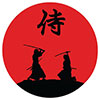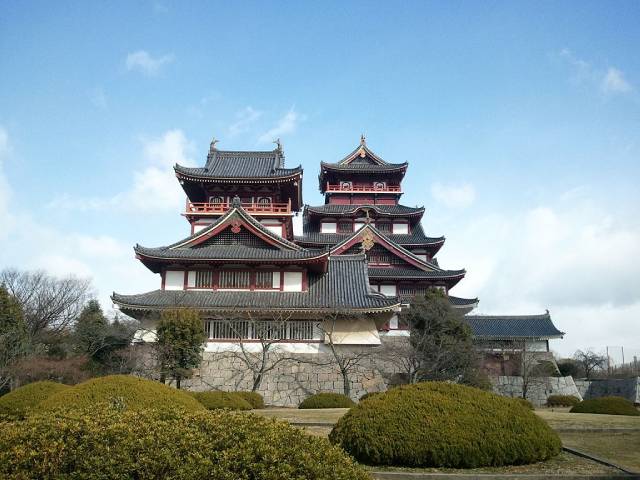
Fushimi Castle, also known as Momoyama Castle or Fushimi-Momoyama Castle, is located in Fushimi Ward, Kyoto. Originally built by Toyotomi Hideyoshi between 1592 and 1594 as his retirement residence, the castle was destroyed by the 1596 Keichō–Fushimi earthquake and later rebuilt. However, it was demolished again in 1623, and its site now houses the tomb of Emperor Meiji. A replica of the castle was constructed nearby in 1964.
The Azuchi–Momoyama period of Japanese history partly derives its name from Fushimi Castle. The original structure was designed more as a retirement palace for Hideyoshi than a military fortress, known for its luxurious interiors, including the famous Golden Tea Room, adorned with gold leaf. Twenty provinces contributed workers for the castle’s construction, involving a labor force of 20,000–30,000.
Though the castle was primarily a lavish residence, it played a strategic role during key historical events. In 1600, it was the site of a significant siege by Ishida Mitsunari’s forces, where Tokugawa Ieyasu's loyal retainer, Torii Mototada, heroically defended the castle for 11 days. This delay was crucial, giving Tokugawa enough time to gather his army and ultimately secure victory at the Battle of Sekigahara.
In 1623, after the castle was dismantled, its materials were repurposed for temples and other structures across Japan. Some temples in Kyoto, such as Yōgen-in, Genkō-an, and Hōsen-in, even have ceilings made from floorboards stained with the blood of Torii's garrison, who committed seppuku after the castle fell.
The current Fushimi Castle, rebuilt in 1964 using concrete, served as a museum showcasing Hideyoshi's life and achievements, and was part of a theme park called "Castle Land" before closing to the public in 2003. However, the grounds were reopened in 2007.
See also
-
Kanazawa Castle
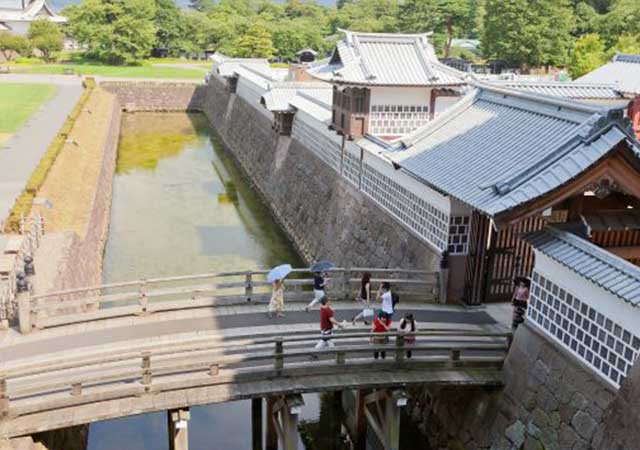
Construction of Kanazawa Castle began in 1580 on the orders of Sakuma Morimasa, a vassal of Oda Nobunaga. The castle was built on the site of the Ikko-ikki sect's Oyama Gobo temple, which is why it is sometimes called Oyama Castle. Morimasa managed to build several moats and begin construction of a castle town. However, after his defeat at the Battle of Shizugatake in 1583, he was executed, and ownership of the castle passed to Maeda Toshiie (1538–1599).
-
Nakatsu Castle
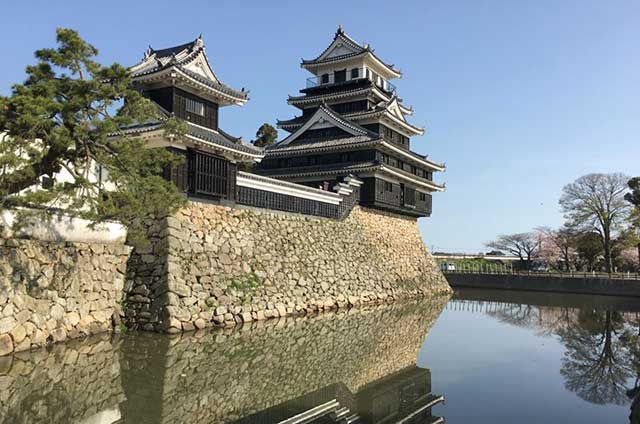
Kuroda Yoshitaka (1546–1604) was one of the closest advisors to the legendary military commander Toyotomi Hideyoshi. He took part in key military campaigns of the late 16th century, including the campaign against Shikoku in 1585 and the campaign against Kyushu in 1587. Later, during the second campaign in Korea, Yoshitaka served as chief advisor to the commander of the invasion forces, Kobayakawa Hideaki. After Hideyoshi's death, he swore allegiance to Tokugawa Ieyasu, thereby securing his influence and patronage under Japan's new leader.
-
Edo Castle
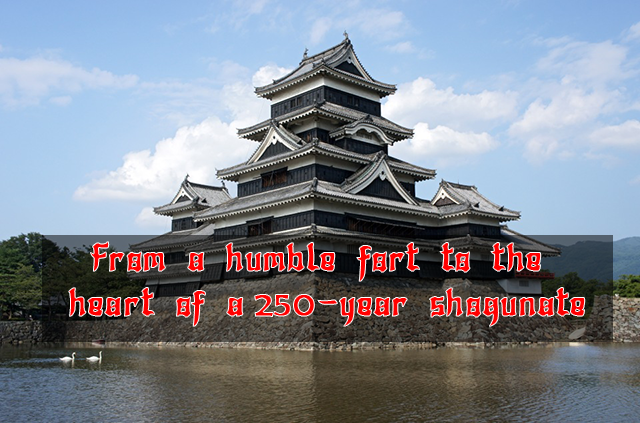
The history of Edo Castle dates back to the Heian period, when the Edo clan built a small fort on this site. In 1457, the vassal of the Uesugi clan, Ota Dokan (1432–1486), constructed a full-scale castle here. Internal conflicts weakened the Uesugi clan, and in 1524, Ota Dokan’s grandson, Ota Yasutaka, surrendered the castle without resistance to the forces of Hojo Soun, the ambitious leader of the Hojo clan. While Odawara Castle remained the clan's main stronghold, Edo was considered a key strategic fortress.
-
Samurai Museum Shinjuku

Situated in the vibrant district of Shinjuku, the museum showcases an extensive collection of samurai armor, weapons, and cultural artifacts spanning from the Kamakura to the Edo period. The exhibits aim to convey the samurai's unwavering commitment to honor and discipline, reflecting how their spirit continues to influence modern Japanese culture.
-
Anjo Castle

Anjo Castle was built on a slight elevation at the edge of the Hekikai Plateau, about 2 kilometers southeast of present-day central Anjo City in Aichi Prefecture. Today, the surrounding area thrives on large-scale agriculture and automotive manufacturing, utilizing the expansive flatlands and its proximity to the Nagoya region.
-
Numata Castle
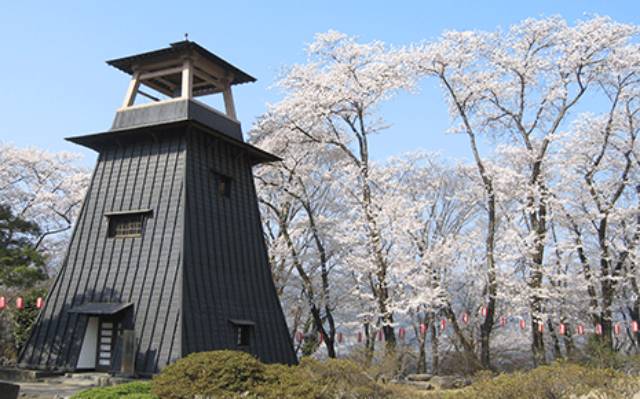
Numata Castle, located in Numata, northern Gunma Prefecture, Japan, has a rich and complex history. During the late Edo period, it served as the residence of the Toki clan, who ruled the Numata Domain. Over the centuries, the castle changed hands multiple times and was the site of significant battles during the Sengoku period.
-
Iwabitsu Castle
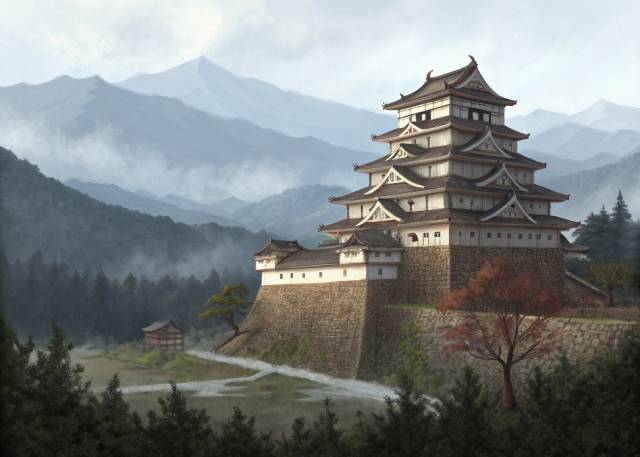
Iwabitsu Castle is a yamashiro-style (mountain) castle located atop Mount Iwabitsu in Higashiagatsuma, Gunma Prefecture, Japan. Recognized for its historical significance, its ruins have been protected as a National Historic Site since 2019.
-
Tsutsujigasaki Castle

Tsutsujigasaki Castle (Tsutsujigasaki Yakata) served as the fortified residence of the last three generations of the Takeda clan and is located in the heart of Kofu, Yamanashi Prefecture, Japan. Unlike traditional Japanese castles, it was not referred to as a "castle" in Japanese, as the Takeda clan famously believed in relying on their warriors as their true fortifications, stating, "Make men your castle, men your walls, men your moats." Designated a National Historic Site in 1938, the ruins are now open to the public and house the Takeda Shrine, a Shinto shrine dedicated to the deified spirits of the Takeda clan.

